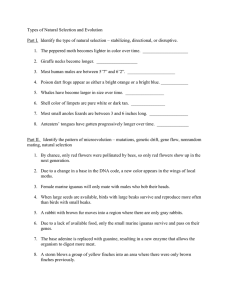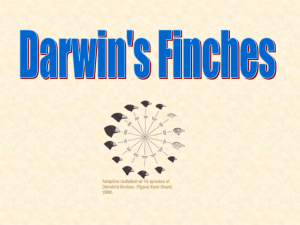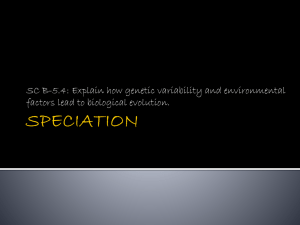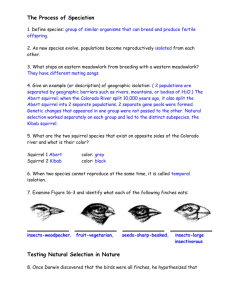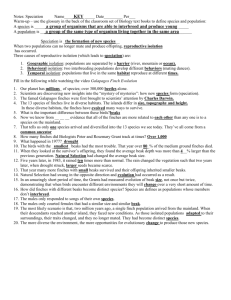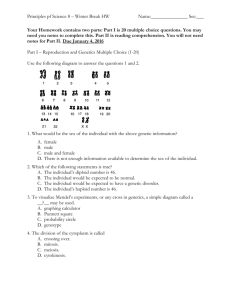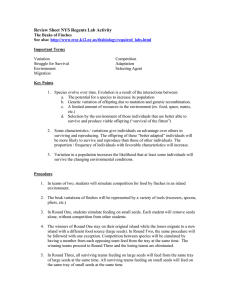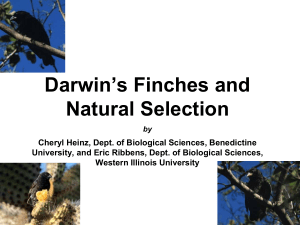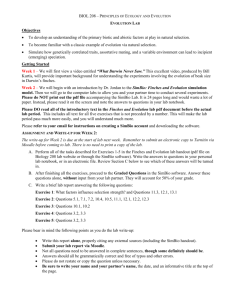Information on Finch Beaks
advertisement
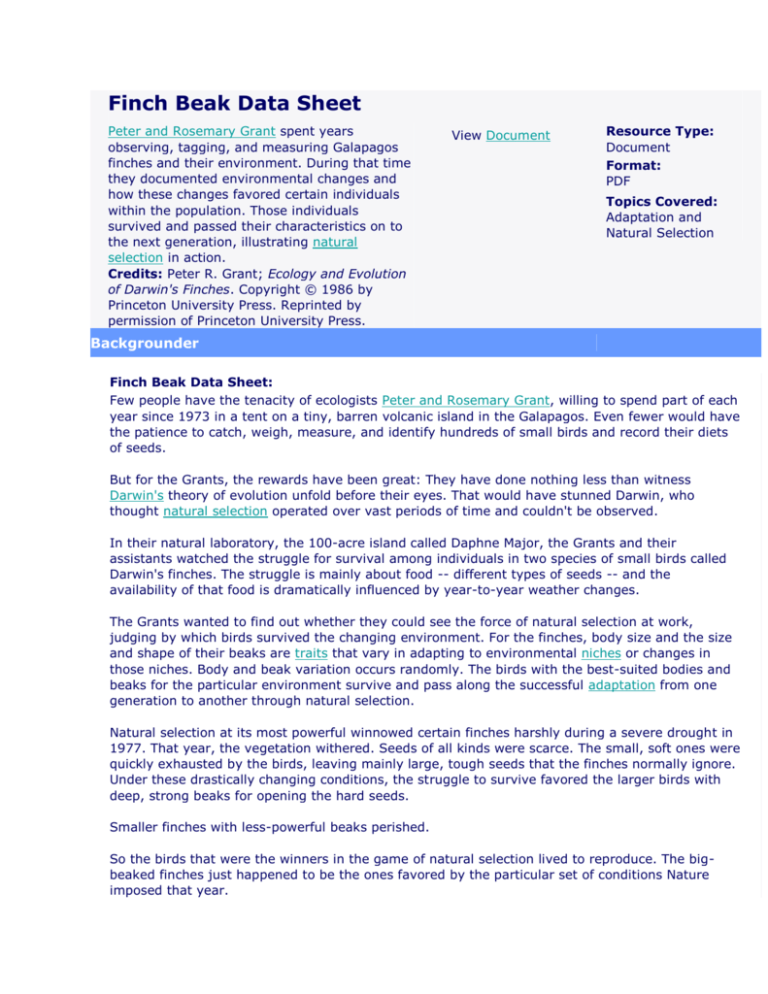
Finch Beak Data Sheet Peter and Rosemary Grant spent years observing, tagging, and measuring Galapagos finches and their environment. During that time they documented environmental changes and how these changes favored certain individuals within the population. Those individuals survived and passed their characteristics on to the next generation, illustrating natural selection in action. Credits: Peter R. Grant; Ecology and Evolution of Darwin's Finches. Copyright © 1986 by Princeton University Press. Reprinted by permission of Princeton University Press. View Document Resource Type: Document Format: PDF Topics Covered: Adaptation and Natural Selection Backgrounder Finch Beak Data Sheet: Few people have the tenacity of ecologists Peter and Rosemary Grant, willing to spend part of each year since 1973 in a tent on a tiny, barren volcanic island in the Galapagos. Even fewer would have the patience to catch, weigh, measure, and identify hundreds of small birds and record their diets of seeds. But for the Grants, the rewards have been great: They have done nothing less than witness Darwin's theory of evolution unfold before their eyes. That would have stunned Darwin, who thought natural selection operated over vast periods of time and couldn't be observed. In their natural laboratory, the 100-acre island called Daphne Major, the Grants and their assistants watched the struggle for survival among individuals in two species of small birds called Darwin's finches. The struggle is mainly about food -- different types of seeds -- and the availability of that food is dramatically influenced by year-to-year weather changes. The Grants wanted to find out whether they could see the force of natural selection at work, judging by which birds survived the changing environment. For the finches, body size and the size and shape of their beaks are traits that vary in adapting to environmental niches or changes in those niches. Body and beak variation occurs randomly. The birds with the best-suited bodies and beaks for the particular environment survive and pass along the successful adaptation from one generation to another through natural selection. Natural selection at its most powerful winnowed certain finches harshly during a severe drought in 1977. That year, the vegetation withered. Seeds of all kinds were scarce. The small, soft ones were quickly exhausted by the birds, leaving mainly large, tough seeds that the finches normally ignore. Under these drastically changing conditions, the struggle to survive favored the larger birds with deep, strong beaks for opening the hard seeds. Smaller finches with less-powerful beaks perished. So the birds that were the winners in the game of natural selection lived to reproduce. The bigbeaked finches just happened to be the ones favored by the particular set of conditions Nature imposed that year. Now the next step: evolution. The Grants found that the offspring of the birds that survived the 1977 drought tended to be larger, with bigger beaks. So the adaptation to a changed environment led to a larger-beaked finch population in the following generation. Adaptation can go either way, of course. As the Grants later found, unusually rainy weather in 1984-85 resulted in more small, soft seeds on the menu and fewer of the large, tough ones. Sure enough, the birds best adapted to eat those seeds because of their smaller beaks were the ones that survived and produced the most offspring. Evolution had cycled back the other direction.
